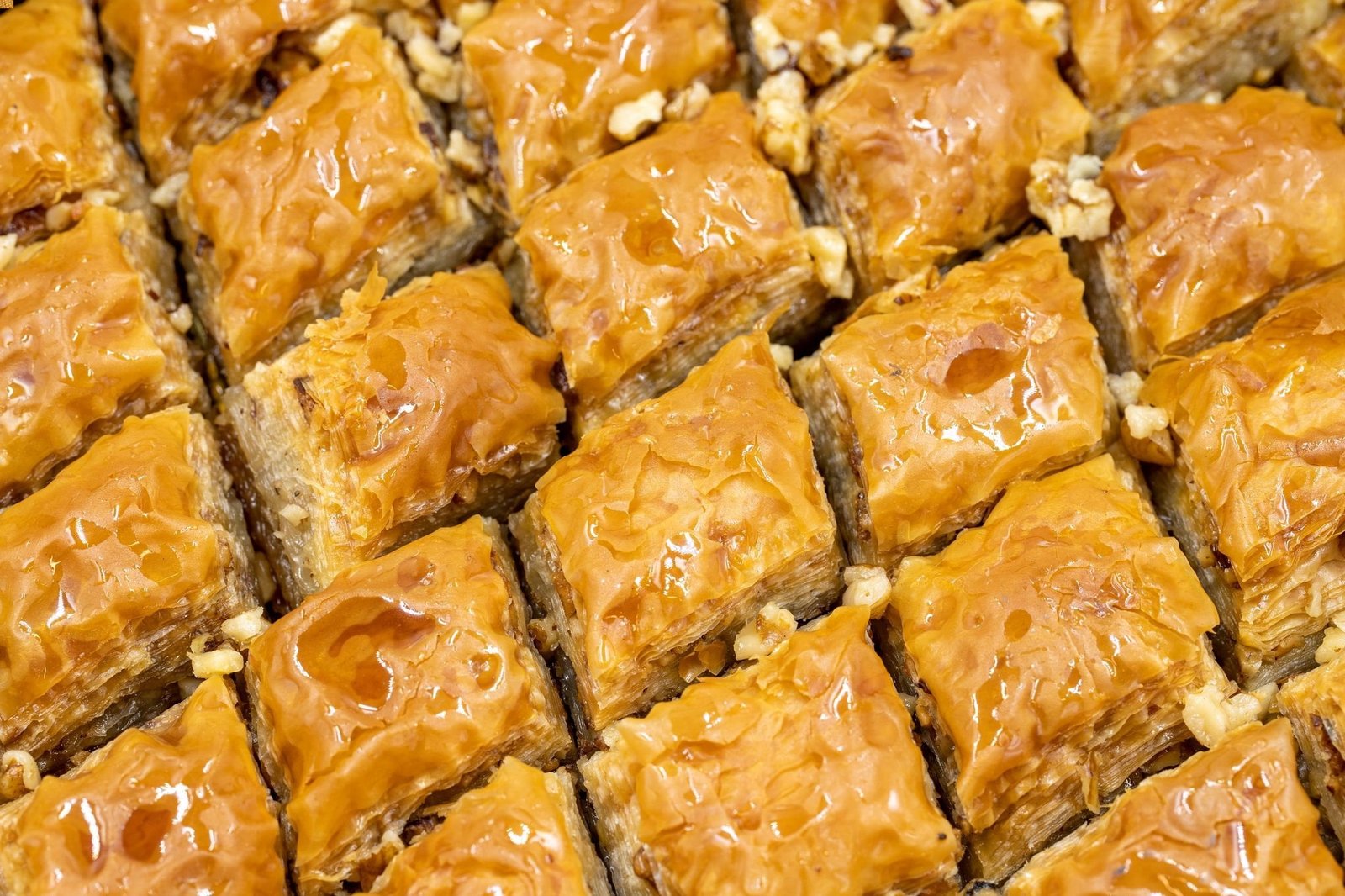special pastry called “su böreği,” a layered Ottoman dessert called “baklava,” or stuffed or wrapped leaves known as “sarma” – if you see any of these three dishes on a table or plate, then know that there stand the fruits of a lot of effort.

Let’s take a closer look at these dishes, each of which requires a different touch of delicacy and method.
These special recipes are made with similar techniques in every region of Anatolia, but they have their own tricks and even flavorful secrets.
In addition to the important details such as the cheese in the börek, the number of layers of the baklava and the spice in the sarma, they are all handcrafted and a unique experience for your palate.
Su böreği
Su böreği is a type of savory pastry in Turkish cuisine. Its most important feature is the boiled phyllo dough.
Let’s talk about the preparation stages of this delicious food, which comes in minced meat or cheese varieties.
The main ingredients of the dough to be made into sheets of phyllo are flour, eggs and salt.
It is generally calculated as one egg for each phyllo sheet. The eggs are broken and kneaded by adding flour and salt little by little.
When the dough becomes smooth, tray-sized rounds of phyllo are prepared and boiled in hot water. It is important to not tear the dough at this stage, which is taken out with the help of a strainer. The phyllo’s excess water drains off in the strainer. At this point, fast hands are important because while boiling one dough, it is necessary to prepare the other and arrange another on the tray.
For this reason, it is usually prepared by two people. When you start arranging the phyllo on the tray, melted butter is spread on each layer, cheese or minced meat is put in the middle layer, and the remaining phyllo is placed in the same manner. The creation is baked until it turns golden on both sides. Although this process works perfectly in a wood oven, of course, it is possible to bake it in household ovens too.
The quality of the material used, the thinness of the dough and the fact that it is cooked without tearing are important tricks.
When in Türkiye, I highly recommend you hunt down the homemade version of this wonderful pastry to try.
Baklava
Baklava is a kind of sherbet dessert that has an important place in Turkish, Middle Eastern and Balkan cuisines.
In 2013, it was registered by the European Union Commission as a Turkish dessert.
Let’s take a closer look at the most classic version of this dessert, which has hundreds of varieties.
Although Gaziantep is the first place that comes to mind when one thinks of baklava, it is possible to come across different and delicious variations in every region.
Though there are numerous popular kinds of baklava such as pistachio, hazelnut, almond, molasses and cheese, its most common form is homemade baklava with walnuts.
First of all, it is necessary to use good quality flour for the baklava dough, and the dough is kneaded with vinegar and eggs.
The preferred recipe calls for 40 layers of phyllo dough, so the dough is divided into 40 lumps, each of which is covered with starch, rolled out paper thin and placed on the tray.
They should be rolled out so thin that a newspaper placed behind them can be read.
While creating this delicacy, it takes real mastery to roll out the dough without tearing it.
In almost every house in Anatolia, women are the masters of this business.
The phyllo dough, which is arranged in layers, is greased with plenty of butter and chopped walnuts are sprinkled between the layers. The layered masterpiece is placed in the oven with plenty of butter.
Baklava, which turns a deep brownish red like a pomegranate, is baked and a sugary syrup is prepared. The syrup is poured over the top.
The delicate crunch, steam rolling off the top and the shiny and crispy surface all make baklava extremely satisfying to eat.
The most popular method of eating baklava is to throw a whole piece in your mouth so that the crispy surface touches your tongue.
Sarma
Who first discovered that grape leaves are so delicious?
How did they come up with the idea to wrap spices and rice in it?
These questions often puzzle me, but let’s get back to the topic.
Sarma is a dish that can be prepared with a variety of leaves and stuffing, but it is usually made with mainly bulgur or rice and grape leaves. It can also be made with white cabbage, black cabbage, mulberry leaves, cherry leaves or vine leaves.
It originates from Ottoman cuisine and is widely made in the lands that once were the Ottoman Empire.
There are different varieties in the form of vegetarian olive oil-based rolls, which are unique to the central province of Nevşehir, the Black Sea province of Tokat and Aegean cuisine, or a wrap with minced meat.
This delicious Ottoman food is sometimes consumed as an appetizer or sometimes as a main course.
The collected fresh leaves are boiled in hot water. The stuffing is prepared with ingredients such as onions, rice, spices and dried currents, and the mixture is wrapped in the leaves.
It is cooked with plenty of olive oil and lemon, and served cold.
Although it is a little troublesome to prepare, it is among the indispensable flavors of Türkiye.
